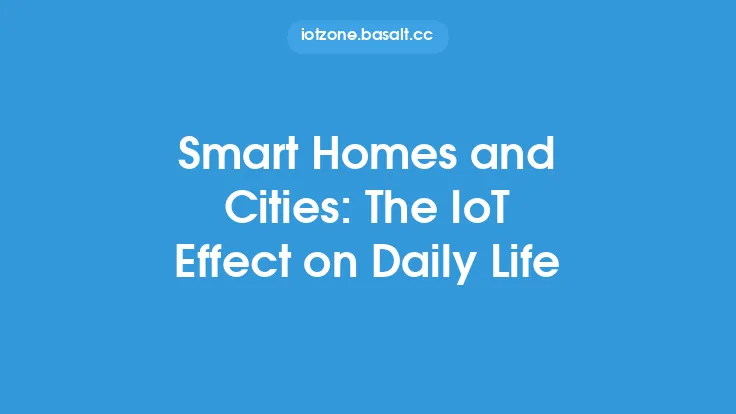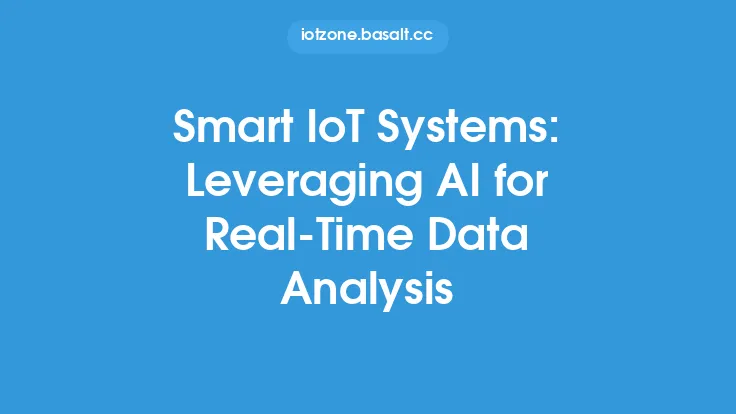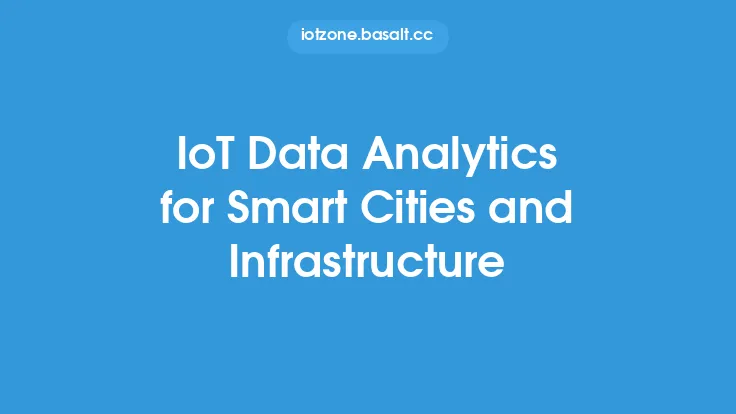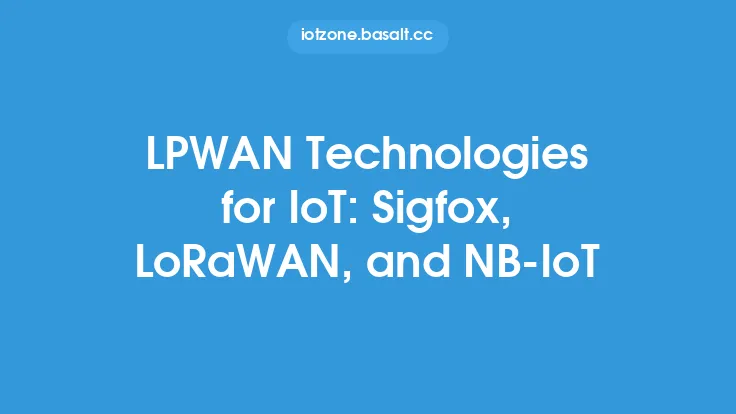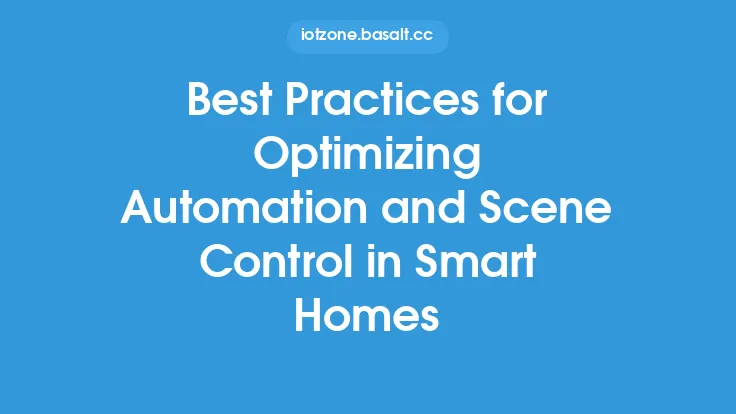The integration of Artificial Intelligence (AI) and the Internet of Things (IoT) has given rise to a new era of smart homes and cities. By leveraging the capabilities of AI-powered IoT solutions, individuals and communities can experience improved convenience, efficiency, and sustainability in their daily lives. At the heart of these solutions lies a complex network of interconnected devices, sensors, and data analytics platforms that work in tandem to create a seamless and intelligent environment.
Introduction to AI-Powered IoT Solutions
AI-powered IoT solutions are designed to collect and analyze data from various sources, including sensors, devices, and other connected objects. This data is then used to make informed decisions, automate tasks, and optimize processes in real-time. In the context of smart homes and cities, AI-powered IoT solutions can be applied to a wide range of applications, including energy management, transportation systems, public safety, and waste management. By harnessing the power of AI and IoT, individuals and communities can create a more sustainable, efficient, and livable environment.
Key Components of AI-Powered IoT Solutions
Several key components are necessary for the development and implementation of AI-powered IoT solutions. These include:
- Sensors and Devices: A network of sensors and devices that collect data on various parameters, such as temperature, humidity, energy usage, and traffic flow.
- Data Analytics Platforms: Advanced data analytics platforms that can process and analyze large amounts of data in real-time, using techniques such as machine learning and deep learning.
- Communication Protocols: Standardized communication protocols, such as Wi-Fi, Bluetooth, and cellular networks, that enable devices to communicate with each other and with the cloud.
- Cloud Infrastructure: Scalable cloud infrastructure that can store, process, and analyze large amounts of data, and provide real-time insights and recommendations.
- AI and Machine Learning Algorithms: Advanced AI and machine learning algorithms that can learn from data, identify patterns, and make predictions and recommendations.
Applications of AI-Powered IoT Solutions in Smart Homes
AI-powered IoT solutions have numerous applications in smart homes, including:
- Energy Management: AI-powered IoT solutions can optimize energy usage in homes by learning occupancy patterns, adjusting lighting and temperature settings, and detecting energy-wasting appliances.
- Home Automation: AI-powered IoT solutions can automate various tasks in the home, such as locking doors, turning off lights, and adjusting thermostat settings.
- Security and Surveillance: AI-powered IoT solutions can enhance home security by detecting intruders, recognizing faces, and alerting homeowners to potential threats.
- Health and Wellness: AI-powered IoT solutions can monitor health and wellness parameters, such as air quality, noise levels, and sleep patterns, and provide personalized recommendations for improvement.
Applications of AI-Powered IoT Solutions in Smart Cities
AI-powered IoT solutions have numerous applications in smart cities, including:
- Traffic Management: AI-powered IoT solutions can optimize traffic flow, reduce congestion, and minimize travel times by analyzing data from traffic sensors and cameras.
- Public Safety: AI-powered IoT solutions can enhance public safety by detecting crime patterns, recognizing suspicious behavior, and alerting law enforcement to potential threats.
- Waste Management: AI-powered IoT solutions can optimize waste collection routes, reduce waste disposal costs, and minimize environmental impact by analyzing data from waste sensors and cameras.
- Energy and Utilities: AI-powered IoT solutions can optimize energy and utilities management, reduce energy waste, and minimize outages by analyzing data from smart meters and grid sensors.
Benefits of AI-Powered IoT Solutions
The benefits of AI-powered IoT solutions are numerous and significant. These include:
- Improved Efficiency: AI-powered IoT solutions can automate tasks, optimize processes, and reduce waste, leading to improved efficiency and productivity.
- Enhanced Convenience: AI-powered IoT solutions can provide personalized recommendations, automate routine tasks, and enhance overall convenience and quality of life.
- Increased Sustainability: AI-powered IoT solutions can reduce energy consumption, minimize waste, and promote sustainable practices, leading to a more sustainable and livable environment.
- Better Decision-Making: AI-powered IoT solutions can provide real-time insights and recommendations, enabling individuals and communities to make informed decisions and drive positive change.
Challenges and Limitations of AI-Powered IoT Solutions
Despite the numerous benefits of AI-powered IoT solutions, there are several challenges and limitations that must be addressed. These include:
- Data Privacy and Security: AI-powered IoT solutions require access to large amounts of personal and sensitive data, which must be protected from unauthorized access and cyber threats.
- Interoperability and Standardization: AI-powered IoT solutions require standardized communication protocols and interoperable devices, which can be a challenge in a fragmented and rapidly evolving market.
- Scalability and Reliability: AI-powered IoT solutions must be scalable and reliable, able to handle large amounts of data and provide real-time insights and recommendations.
- Public Awareness and Education: AI-powered IoT solutions require public awareness and education, to ensure that individuals and communities understand the benefits and limitations of these solutions.
Future Directions and Opportunities
The future of AI-powered IoT solutions is exciting and rapidly evolving. Some potential future directions and opportunities include:
- Edge Computing: The development of edge computing technologies, which can process data in real-time at the edge of the network, reducing latency and improving performance.
- 5G Networks: The deployment of 5G networks, which can provide high-speed, low-latency connectivity for AI-powered IoT solutions.
- Quantum Computing: The development of quantum computing technologies, which can provide exponential increases in computing power and enable new applications and use cases for AI-powered IoT solutions.
- Human-Centered Design: The development of human-centered design principles, which can ensure that AI-powered IoT solutions are intuitive, user-friendly, and meet the needs of individuals and communities.
